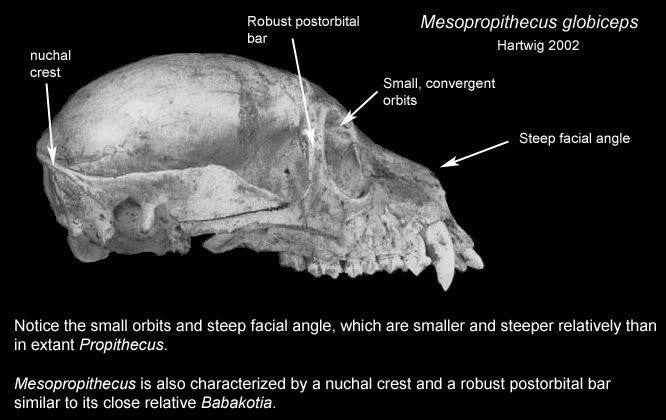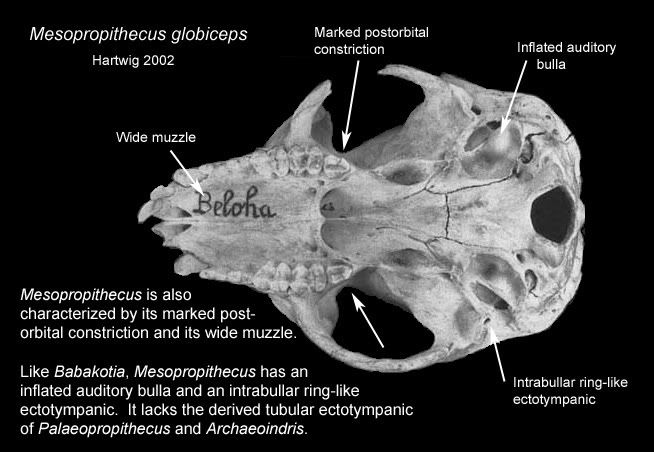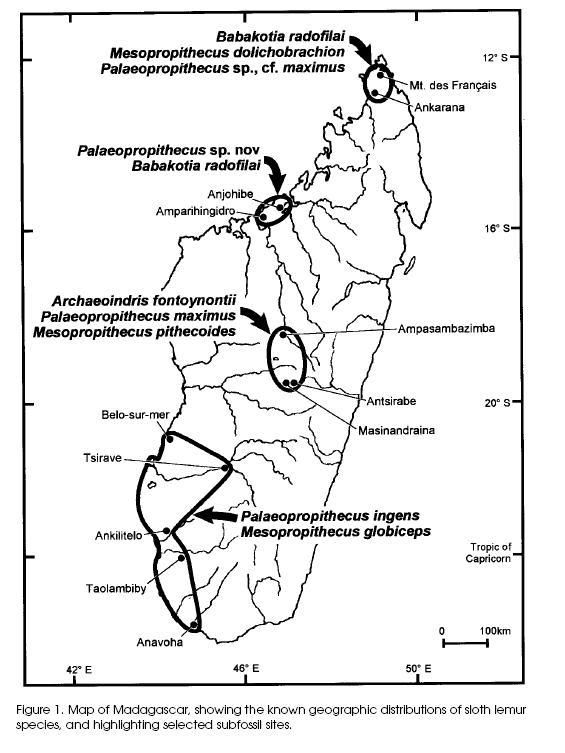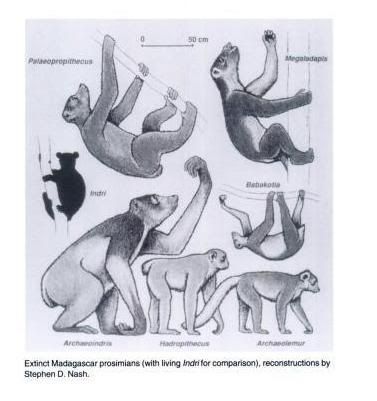Post by another specialist on Feb 28, 2007 17:45:49 GMT
anotherspecialist said:
sordes said:
Information about anatomy and behavior, pictures of the skull and bones:http://www.laits.utexas.edu/shapiro/sub/sub33.htmlwww.laits.utexas.edu/shapiro/sub/sub34.html
www.laits.utexas.edu/shapiro/sub/sub35.html
www.laits.utexas.edu/shapiro/sub/sub36.html
Mesopropithecus - Cranial Characteristics
Mesopropithecus retains the indriid-type toothcomb with four anterior teeth and shares numerous dental features with indriids and other palaepropithecids, however it has larger upper incisors than the extant Propithecus. Mesopropithecus is also characterized by short upper and lower premolars.
Mesopropithecus
The smallest and most primitive of the palaeopropithecids, Mesopropithecus is the most similar subfossil lemur to extant indriids, especially Propithecus, and a basal member of the sloth lemurs. Of the palaeopropithecids, it was the most quadrupedal, engaging in loris-like slow climbing and quadrupedalism with some forelimb and hindlimb suspension.
Geographical Distribution: central, northern, southern, and southwestern Madagascar
Age: Late Quaternary
Dental Formula: 2.1.2.3 / 2.0.2.3
Reconstructed Body Mass: 10 kg
Diet: primarily folivorous, with some fruit and seeds
Mesopropithecus - Dental Characteristics
Mesopropithecus retains the indriid-type toothcomb with four anterior teeth and shares numerous dental features with indriids and other palaepropithecids, however it has larger upper incisors than the extant Propithecus. Mesopropithecus is also characterized by short upper and lower premolars.
Mesopropithecus - Postcranial Characteristics
As a basal member of the sloth lemurs, Mesopropithecus is the most indriid-like and quadrupedal, however it does share some suspensory adaptations with the other palaeopropithecids, including strongly curved proximal phalanges and moderately reduced spines of lumbar vertebrae. Like the indriids, Mesopropithecus has fore and hindlimbs equal in length.








